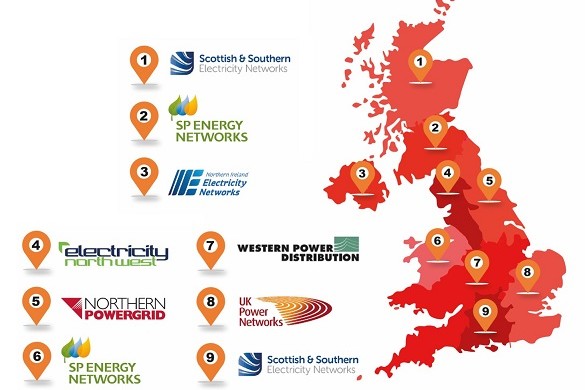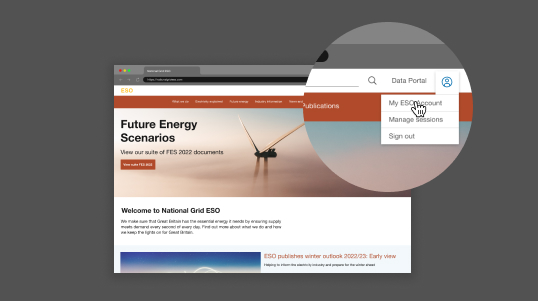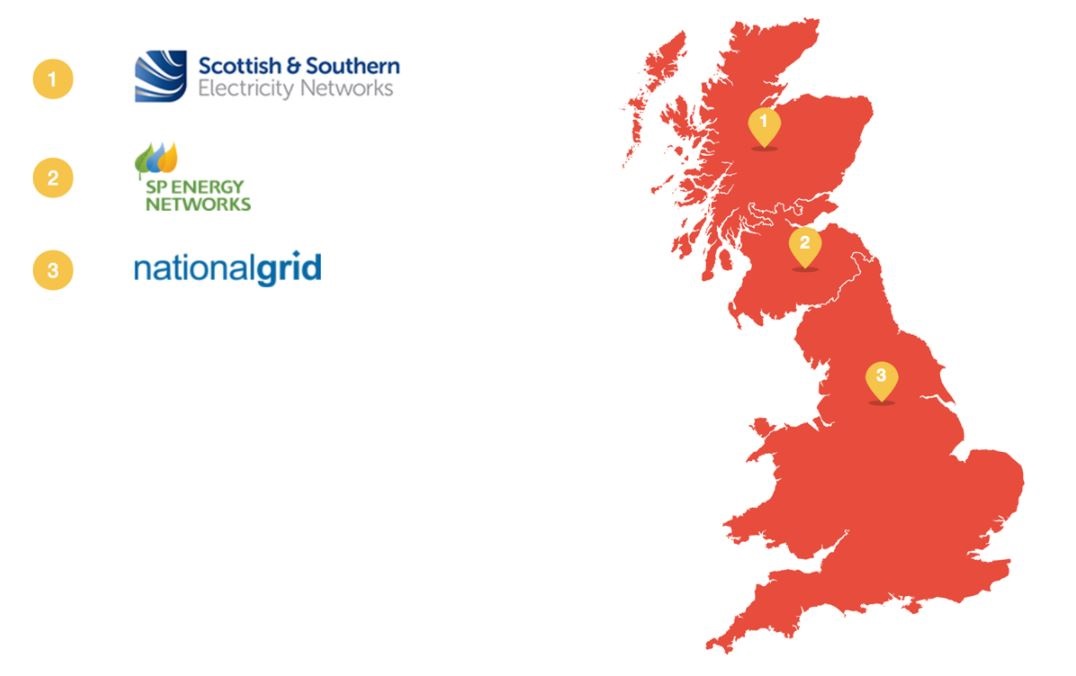As the Electricity System Operator for Great Britain, it’s our job to move electricity safely, reliably and efficiently through the system.
We don’t generate or sell electricity and we’re not responsible for the infrastructure needed to move electricity around, like pylons and cables. We balance the system in real time to make sure that supply always meets demand. We operate 24/7 to help make sure the rules that govern the industry’s roles and responsibilities are fit for purpose.
The ESO Connections team is responsible for leading and facilitating the process by which customers connect to and make use of the transmission system. Our team of Connection Contract Managers and Compliance Contract Managers are on hand to talk you through this process from start to finish. You can find their contact information here.
Key market participants in the Connections process

On 1 April 2019, the ESO became a legally separate business within the National Grid Group. This provides transparency in our decision-making and gives confidence that everything we do will promote competition, and is ultimately for the benefit of consumers.
Legal separation has impacted the connections process and the separation of the NGET Transmission Owner has meant customers have better access to contacts in both ESO and NGET. We have received feedback since separating that suggests some stakeholders would like the roles and responsibilities of the ESO and TO companies in relation to the connection process to be clearer.
It is our responsibility to lead the connections application and offer process. When you apply for a contract to connect, or to make use of the transmission system, the application comes to the ESO and we progress it with the relevant Transmission Owner (TO), depending on where your connection is. Throughout the process you will engage with people across ESO and TO companies, but it will be the ESO that sends you your contract offer. You can find more information about this on the Connections Offer Process page.
- Contracted party – your contract, whether a connection contract or a generation agreement, will be held with us, the ESO for the life of your project.
- Pre-connection – if you are connecting directly, you are most likely to have a Construction Agreement for the works needed to facilitate your connection to the transmission system. This agreement will also be held with the ESO, and we’ll contract separately with the relevant TO for the completion of the works.
- Compliance and commissioning – the Connections team is responsible for the compliance process. They’ll make sure that any party connecting to, or making use of, the transmission system is adhering to the necessary technical requirements, which are set out in the Grid Code. Before the transmission system can be used, you will need an Operational Notification certificate from our Compliance team.
- Ongoing engagement – your ESO Connections Contract Manager is your primary contact for anything to do with your connection contract. For example, if you want to make a change to your connection agreement, generator agreement or Construction Agreement. Your agreement will be in place for the life of your project and we’ll provide advice on any issues you experience during your connection, as well as disconnection.
The Transmission Owner (TO) owns the infrastructure and the assets that make up the transmission system.
- Planning and design – the TOs are responsible for the planning, design, construction and maintenance of their network.
- Connection design – the TO will design your connection and create a Transmission Owner Construction Offer (TOCO) to contract directly with National Grid ESO for the works needed to connect you.
- Ongoing engagement – although you won’t have a direct contractual relationship with the TO, they are committed to working closely with you and your ESO Connection Contract Manager throughout the connection process to provide ongoing guidance and support. They are available to discuss specifics about the design of your connection, the construction programme, and all other aspects of delivery.
The map below shows the transmission owners responsible for each area:
If you are connecting directly to the transmission system, you will be connecting to one of the TO’s networks*. The map below shows the TOs and the geographic locations of their networks.
* National Grid ESO operates the transmission system for the whole of Great Britain but does not own any of the infrastructure, which is owned and maintained by the Transmission Owners.
If you need a direct connection to the high voltage transmission system you will need to submit a connection application. This applies to all connection types, e.g. generation, demand, interconnector and tertiary.
National Grid ESO will work with you and the relevant to create your connection offer throughout the CUSC offer period. You can access resources to help you in your application on the Connections offer process page.
If you are not connecting directly to the transmission system, your connection will be to one of the Distribution Network Operators (DNOs). DNOs convert the high voltage power we send into a lower voltage and then send it on to the consumer using local networks.
The map below shows the DNOs and the geographic locations of their networks.

If your connection is at a distribution level, your connection contract will be held with the DNO and not with National Grid ESO. Whether you need an embedded generator agreement with us will depend on your size, how you are registered and whether you wish to be an active balancing mechanism (BM) participant, or to provide certain services to the ESO.
- Small embedded – if you are classed as a small embedded generator and you don’t need access to the transmission system, or hold Transmission Entry Capacity (TEC), then your contractual arrangements will be with the DNO you are connecting to only. The DNO will make us aware of your connection through the Statement of Work (SoW) or the Appendix G process.
- Large embedded – if you are applying for a project that breaches the capacity thresholds shown below and you’re connecting at a distribution level, then you will be classed as a large embedded customer. If this is the case, you will need to have a connection agreement with the DNO and with National Grid ESO. Large generators are categorised as:
- 100MW or greater in National Grid’s transmission network
- 30MW or greater in Scottish Power’s transmission network
- 10MW or greater in Scottish Hydro Electric’s transmission network
Embedded agreement options
There are two agreement options for embedded generators: Bilateral Embedded Generation Agreement (BEGA), and Bilateral Embedded License Exemptible Large Power Station Agreement (BELLA).
- BEGA – a BEGA explains how generators need to comply with the Grid Code, the Connection and Use of System Code (CUSC), and the Balancing and Settlement Code (BSC). It also gives you Transmission Entry Capacity (TEC) and the right to operate in the electricity balancing market. And to export onto the NETS.
- BELLA – a BELLA explains how generators need to comply with the Grid Code and the Connection and Use of System Code (CUSC). A BELLA user doesn’t have to comply with the Balancing and Settlement Code (BSC) because a BELLA doesn’t automatically give you the right to operate in the electricity balancing market and export onto the NETS. However, a BELLA user can participate in the balancing mechanism without TEC, provided they install the necessary hardware (EDL, EDT and control telephony). To do this they must ask for the BELLA to include the relevant technical appendices.
Applying for an embedded agreement
To apply for either of these agreements you will need to:
- Complete a connection application form
- Provide the technical data by the Data Registration Code (DRC) using the DRC tool
- Pay the relevant application fee
Who needs an embedded agreement
You’ll need an embedded agreement if you’re:
- An embedded generator who would like to participate in the balancing mechanism
- An embedded generator who would like to provide specific balancing services
You will not need an embedded agreement if you’re:
- A small embedded generator and the above are not applicable. The DNO will notify us via the SoW or Appendix G processes
- A medium embedded generator (between 50MW and 99MW in England and Wales) and the above are not applicable. In this case you are classified as LEEMPS and the DNO will need to provide a Project Progression in respect of your project. Additional technical conditions will form part of the DNO agreement that relates to your project.
You can find more useful information on these sites:
Embedded Generation and Embedded Benefits - BSC Guidance Notes
Connections Offer process guide
Our step-by-step guide takes you through the entire connections offer process, from pre-application to contract signature. You’ll also find links to more information to help you when you’re submitting an application.
Got a question? See our bank of frequently asked questions.




